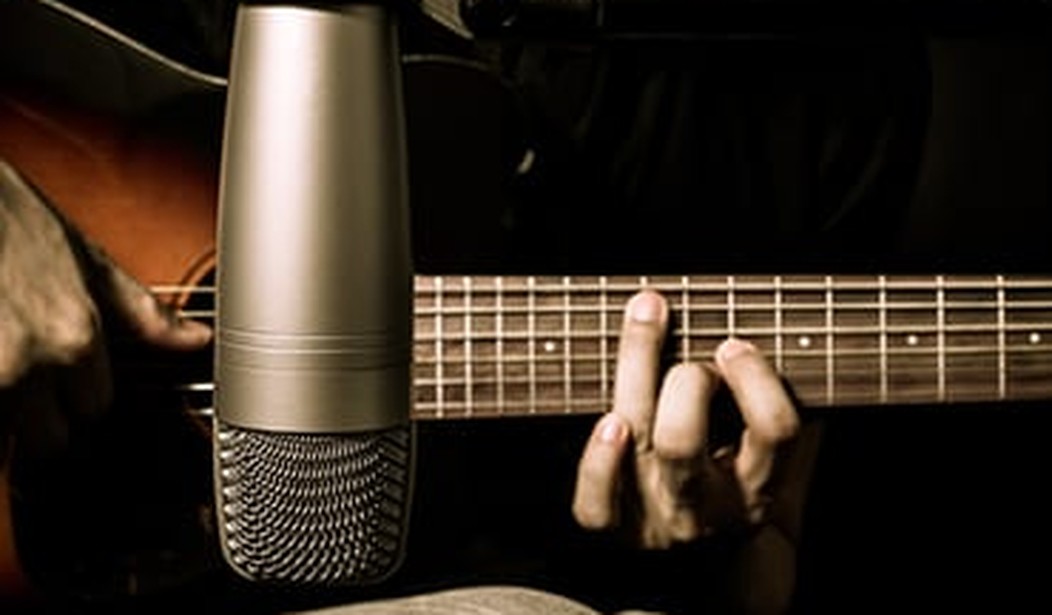I spend a lot of time on the deck of my country home studying birds and listening to their distinctive calls. The jay is a mimetic impresario, shrieking like a banshee or warbling like a flute; the cardinal boasts several different registers, including a wolf-whistle and a truncated siren; the dark-eyed junco’s trill and chip has little pitch differentiation; nuthatches squeak; robins cheep; cedar waxwings emit a scrannel falsetto, a high-pitched shree; downy woodpeckers drum, their hatchlings sound like lighter clicks; crows and grackles resemble Tom Waits on steroids; chickadees emit a flat peeping sound, the eponymous chicka-dee-dee-dee, which is a form of recognizable communication. Whenever we put out seed, they signal to each other the availability of grub with an eight-note “dee.” Quite remarkable, really. But none of them produces melody.
Even the famed Keatsian nightingale, pouring forth its soul “in some melodious plot/Of beechen green,” does not really sing. Tristan thrumming like a nightingale—cum russino, as the 12th century poet Thomas of Britain described it in his Tristan—to attract and summon Isolde would scarcely have worked in reality. It couldn’t have sounded any worse than Stravinsky’s screechy symphonic poem Le chant du rossignol (Song of the Nightingale). (Full disclosure: my original Russian surname, Soloveitchik, means “nightingale” and was adopted by the Levite Soloveitchik family to signal its duty as Temple singers.) More to the point, the term “birdsong” is a misnomer, or merely a metaphorical designation for ease of reference. A sonogram display, used in analyzing the structure of bird calls, does not track a melody but a concatenation of syllables that simulates a few blips on a hospital monitor.
All of this got me thinking one day about melody. Although like everyone else I knew a melody when I heard one, I had no idea what a melody actually was, that is, what I knew on one level, I didn’t know on another, a paradox of epistemology. I decided to consult my dictionaries, if only as a preliminary step or rudimentary gesture toward comprehension.
The Santorella Dictionary of Musical Terms defines melody as “an organized succession of three or more notes.” This is clearly an unsatisfactory definition since a minimal sequence of notes, indefinitely repeated, often (though not always) with little or no pitch variation, does not constitute what we would normally recognize as a tune. After all, nothing prevents us from generating an organized sequence of notes which may strike us as a demonstrable sonic structure but which we would never hear as a melody. Schoenberg’s atonal or Twelve-Note compositions, in which all twelve notes of the chromatic scale have equal weight and importance, does not yield melody but, as Michael Walsh writes in The Devil’s Pleasure Palace, “music worked out on paper,” expressing a Marxist conception of post-Capitalist culture in which all citizens—aka units—are equal regardless of talent, intelligence and productivity. This is neither music nor melody; it is politics of the dreariest sort.
The Oxford Dictionary of Musical Terms provides a slightly better description of the phenomenon we call “melody,” but fails to consider it in its essence, where it comes from and why it should exist. To say it is “a succession of notes of varying pitch, with an organized and recognizable shape” does not get us very far. So are many other audible events that are not especially or even remotely “melodic.” To attribute melody to dolphin-speak, as the Oxford does, begs the question. (Similarly, the theramin-like language of whales cannot be heard as melody.) To categorize melody as one of the “fundamental capacities of the human species” is true, but unhelpful. The issue is how we hear melody as a unique, modular configuration of sounds which are tangible and yet incorporeal, as if inhabiting an ethereal region between the neural and the spectral and eliciting a vast range of sympathetic response.
I’m not about to dive into the complex universe of musical theory, the history of musical development and its technical armature, or even the romantic pathos of tonal impressionism. Of course, music in the fullest sense—tempo, pitch, timbre, the diverse scales, texture, “color,” counterpoint, their combinations and temporal relationships—is one of the great mysteries of human spirit and culture. Its intrinsic components in their multiple arrangements, however, can be mastered. Here I’m preoccupied with something no less or even more fundamental, cryptic, occult, and maybe unfathomable; namely, with the enigma of melody, that “something” which cannot be mastered. One thinks, too, of the ineffable “sweetness” of melody, what the Greeks called μέλος (mélos) or μέλισμα (mélisma)—song, air tune—derived etymologically from μέλι (méli)—honey. Which brings to mind Aristotle’s maxim in Book VIII of the Politics, quoting the revered poet and musician Musaeus: “Song is to mortals of all things the sweetest.”
To start with, there is plainly no way of knowing how melody originated; here we must rely on pure, unverifiable speculation. Did certain sounds in nature—the kettle drum of thunder suggesting bass notes or avalanches and earthquakes producing eerie ribbons of sound—implant the notion in the minds of our hominid ancestors, like Calibans who dreamed “sweet airs that give delight and hurt not”? Did modulations in speech, phatics and vocatives eventuate in the reproduction of simple melodic sequences? Impossible to tell.
Or was melody—whatever it is—somehow there at the start, predating actual speech, inherent in the chromosomes, a genetic gift that can be either latent or manifest, depending on the individual or the culture? Or, as some may believe, is melody the hosannahs of heaven filtering down to the fallen creature in his travails, subsequently emerging in the spirit? Is this how Jubal, as Genesis 4:21 informs us, became “the father of all such as handle the harp and organ”? One may recall Milton in Book XI of Paradise Lost, who seems to refer to theories of speculative music (musica speculativa) that were in vogue in the 17th century. The notion is that the music created by man on earth (musica practica) is an attempt to replicate the music of the spheres.
Equally mysterious is the process of “inventing” or, better, “discovering” the elusive strains of a melody, guitar on one’s lap, pen and notepad on the table, gaze focused on the far distance. Sometimes a melody seems to resemble a disembodied soul seeking a body to be born in, as in certain religious concepts associated with diverse Eastern faiths and some Western philosophical traditions, like Orphism or NeoPlatonism. You can sense it on its way to its future home, plangent yet insistent, a kind of mellifluous urgency that announces itself as if it were fully formed and needing only to be properly received. Your job is to let it happen, to offer hospitality. As John Keats wrote in a letter to John Taylor of February 27, 1818, “If Poetry comes not as naturally as Leaves to a tree it had better not come at all.” The same may be true of melody. In my experience, the melody and lyrics of the song “Lonely Hotel Room” landed on my guitar within an hour or two—here recorded, accompanied by my wife Janice on keyboard and Matt Baetz on Dobro.
At other times, the melody needs to be sought, coaxed into existence, drawn out of its distal reluctance or fey mischievousness. One knows it’s there, hovering just beyond the horizon of consciousness, but hardly audible, or even completely inaudible—all one intuits is an acoustic shadow. There’s nothing one can do in such cases except hum and strum, without plan, without conviction, intermittently, for as long as it takes—days or weeks. I seem to recall poet Wallace Stevens saying in one of his obiter dicta something to the effect that when inspiration flags, one had better force the issue rather than emerge empty-handed from one’s solitude. There is some truth to this also. Again, from my own practice, the song “Loving You, Loving Me,” here worked up as a video clip, defeated my best efforts for weeks. The only reason I kept flailing away is that I could feel the invisible presence of the melody, tantalizingly suspended somewhere beyond my reach—before it finally alighted on the strings. Songwriters and musicians know exactly what I’m getting at.
Of course, sometimes accidents happen. One is aimlessly fooling around on the instrument and suddenly, without warning, a melody appears out of nowhere, prompted perhaps by a bird call or a lyric forming itself in one’s mind—or by nothing at all—which implies that a meaningful series of notes in some inscrutable way pre-existed its emergence into the material world even without one’s initial awareness or vague presentiment. It might also be the result of a cacophony of unrelated sounds—for example, one is slamming away at the strings or the keyboard in an access of pure frustration—from which a singable tune unexpectedly disenjangles itself, like a cellular mutation, a messed-up gene that leads to something complex and resilient: as biologists say, “a flaw that is wrong in exactly the right way.” The mystery only deepens.
By which I mean not only how a melody comes to be but, as I continue to wonder, what a melody actually is, in effect, the very ontology of song. Rhythm is theoretically understandable; a regular or syncopated beat, meter or the mensural unit of time, kinetic emphasis, are no doubt based on the heartbeat, the accentuations of the pulse over which rhythm is superimposed. But melody?
By “melody,” I intend something other than “music”—which is a composite phenomenon consisting of combinations of tones vocal and instrumental, including rhythm, melody and harmony—and something other than the monophony of early plainsong or Gregorian chant (of which rap is the decadent, contemporary instantiation, a form of liturgical vulgarity). It’s obvious, too, that I hear melody with Western ears, and thus don’t find the music of many other traditions particularly melodic—Indian sitar music, for example. Arabic, Turkish and Persian music is fascinating, dancing maqam quartertones on the oud (from which the European lute is descended), as in this piece by Persian virtuoso Yasamin Shah Hosseini. But for the most part it is not comparatively melodic in the hummability mode. Arab popular music, on the other hand, frequently shows the influence of the Western/Latin/Spanish tradition, as in the 1996 prize-winning song, long one of my favorites, by Amr Diab, Habibi Ya Nour El Ain (“My love, You Are the Glow in My Eyes”).
Melody may have its origin in human nature or in the realm of spirit, but, as we’ve noted, it is inflected differently in different cultures. Tonal systems vary dramatically; yet, though all these systems will qualify as music, not all can be described as melodic. It may well be that the Western imagination is specifically attuned to the reception of melody from its undocumentable source—at any rate, melody in its more elaborate, sophisticated and memorable aspects. The Bible is replete with references to song; the Greeks pioneered a plurality of melodic modes—Dorian, Phrygian, Mixolydian, Lydian, Aeolian, whose intervals were based on mathematical ratios discovered by Pythagoras, which came to be known as “the fingerprints of the Gods”; and Church monophony eventually developed into lavishly harmonic and rhythmic polyphony. I am tempted to say that melody as it has been heard, cultivated, refined and transmitted is one of the signatures of Western civilization, an aural distillate of its essence.
I am by no means suggesting that other musical traditions are not valid and authoritative and beautiful in themselves, but I am proposing that melody per se, in its richest and most memorable form, was detected—and perfected—by the Western sensibility. I will surely be accused of ethnocentrism in advancing such an hypothesis but it seems persuasive to me and at least worth considering. This is not, however, an argument I relish plunging into, and it remains at a tangent to my main thesis.
All this discussion notwithstanding, I still can’t say what melody is. I do know that melody is something that can be hummed, and that I can’t hum plainchant or rap or Ravi Shankar. Hummability is the basic litmus test of melody. Melody is also something that is deeply satisfying, affording us an inexplicable pleasure that is not somatic. It is sensuous but not sensual, appealing to a dimension of our being that oscillates between the emotional and the spiritual, which is why it can affect our mood in profound ways and compel us to echo, duplicate, replay, rehearse, and listen to it over and over again.
Melody can be as simple as, say, Paul Anka’s “Diana” (despite the teenage rubbish of its lyrics) or as hauntingly original as Pachelbel’s “Canon,” which everybody knows from dentists’ waiting rooms. Classical pieces in the form of symphonic or ensemble compositions are certainly not hummable in their lengthy and intricate, horizontal/vertical continuities, but we discern themes and melodies, cantilena passages, that are seductively accessible and that we often find ourselves driven to reproduce. Baroque music is virtually threaded with melodic passages both sprightly and melancholy, a music of paramount hummability. So are country and western, American musical theater and any number of pop exemplars. The same applies to opera. We may not speak Italian or German, but arias from Rigoletto, Manon Lescaut, Die Zauber Flöte and many others run through our minds on their own sonorous power. Offenbach’s “Barcarolle” from The Tales of Hoffmann is enough to drive one crazy with the need to repeat—in fact, it brings the tears to my eyes. Andrew Lloyd Webber’s light operas are, in my estimation, works of melodic genius, especially the melodies from the Phantom. Ditto Gilbert and Sullivan—though in this case the lyrics in their rhyming cleverness tend to consolidate the melodies.
Melody. What it is, how it originates, how we recognize and respond to its auditory contours as something constitutively different from all other sound patterns, why it seizes on memory and mood—all questions I cannot answer and mysteries I cannot plumb. The evolution of speech into myriads of complex forms and structures is no less mysterious. But speech has a purpose, communication, messaging; the “engineering design” behind our sentences serves to ensure comprehension, as Steven Pinker puts it in The Sense of Style. What purpose does melody have? Certainly not communication in the pragmatic way we understand it. Animals clearly possess an embryonic language to signal danger, objects in the environment and visceral states, but they do not sing or hum. There is no melody in nature.
The command Caedmon received from the angel in the Venerable Bede’s The Ecclesiastical History of the English People is, as has been variously rendered, “Sing me Creation,” not lecture or sermonize me. We can surmise that the text would have been an expression of devotion, the melody a homophonic replica of the divine creation felt in the depths of the self.
What can one say? There is an element of the miraculous about melody, and like a miracle it cannot be explained, only marvelled at. It has one wanting to sing Creation. It has one believing in the reality of the numinous.










Join the conversation as a VIP Member